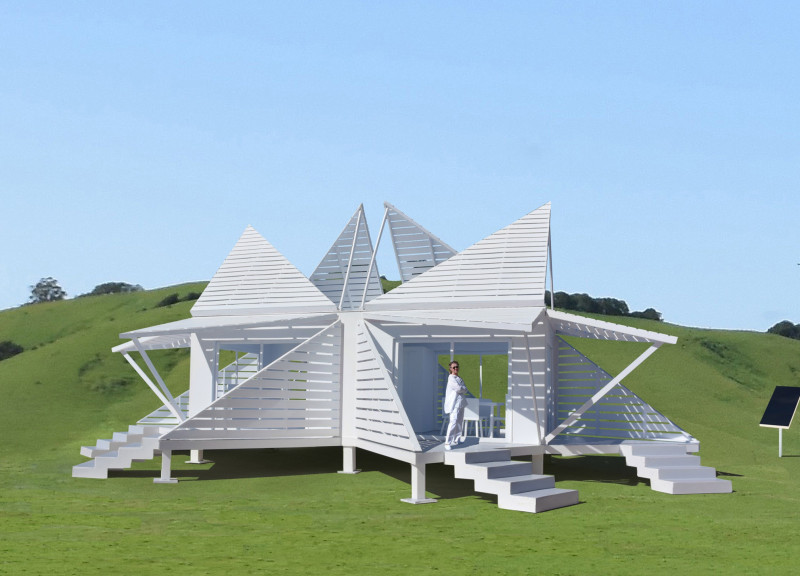5 key facts about this project
The project’s design is characterized by its modular formation, which allows for flexibility in usage and adaptability over time. This modularity reflects a modern approach to architecture, where the fluidity of space can accommodate various functions—from communal areas that encourage gatherings to private zones that serve individual needs. The layout is strategically organized to optimize natural light, which plays a crucial role in enhancing the interior ambiance and promoting a connection with the outdoors. Large windows and open spaces blur the lines between inside and outside, allowing nature to flow into the living areas, contributing to a sense of well-being.
Materials have been selected with careful consideration of durability and sustainability. The use of sustainably sourced timber, for example, not only reduces the environmental impact but also contributes warmth and texture to the overall design. Complementing this wood are elements of steel and concrete—materials that are indicative of modern architecture, providing structural integrity while enabling bold design innovations. These materials have been used thoughtfully, ensuring that they work together cohesively and support the overall architectural vision.
The façade of the building reflects a unique approach that distinguishes this architectural project from other similar designs. A combination of vertical and horizontal lines enhances its visual interest, creating rhythm and a sense of movement. The interplay of materials results in a tactile experience, where passing light engages with surfaces, creating dynamic shadows throughout the day.
Another significant aspect of the project is its commitment to sustainability and energy efficiency. Incorporating green roofs and rainwater harvesting systems not only supports environmental stewardship but also enhances the building's aesthetic while providing practical benefits. The design includes features such as solar panels, which significantly reduce the building's carbon footprint and align with contemporary architectural ideals of responsible design.
The landscape surrounding the building has been meticulously designed to complement the architecture, creating inviting pathways and communal garden spaces that encourage outdoor interaction. These elements not only enhance the beauty of the area but also serve functional purposes, such as promoting biodiversity and providing areas for relaxation and recreation.
A notable design approach within this project is its responsiveness to the local climate and cultural context. By considering the specific environmental factors and the social dynamics of the area, the architecture draws inspiration from local materials, traditional forms, and regional planning practices. This ensures that the project is not merely an import of international trends, but a genuine contribution to its locality, fostering a sense of place and identity.
In summary, this architectural project exemplifies a refined balance between functionality, sustainability, and aesthetic simplicity. The seamless integration of diverse materials, thoughtful spatial configuration, and responsive design strategies contribute to a cohesive entity that enriches its context. For further insights into the architectural elements and detailed plans that inform this project, readers are encouraged to explore the presentation of architectural plans, architectural sections, and architectural ideas that explicitly detail how each aspect has been crafted to fulfill the project’s vision. Engaging with these resources will provide a deeper understanding of the creativity and rigor involved in bringing this architectural design to fruition.


 Michael Eugene Jantzen
Michael Eugene Jantzen 




















